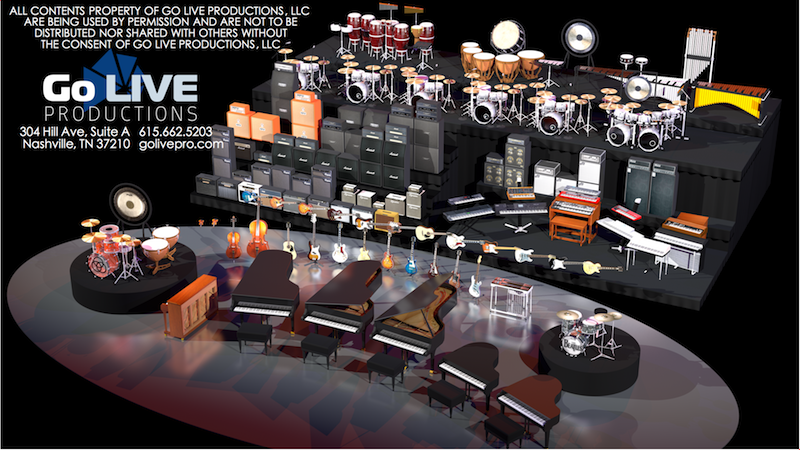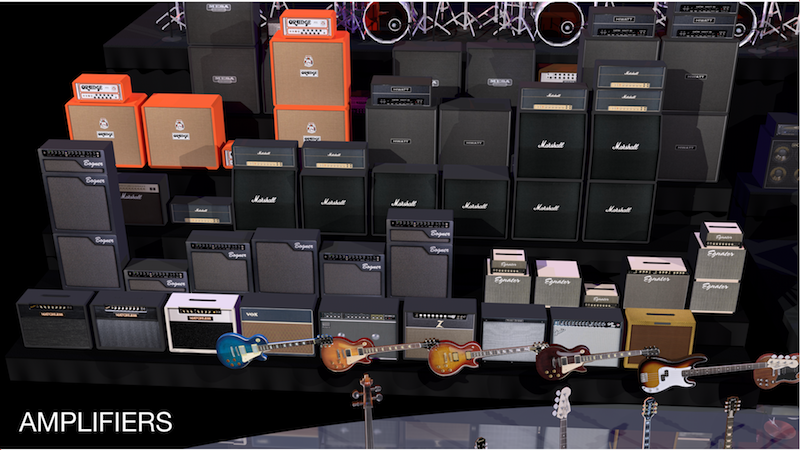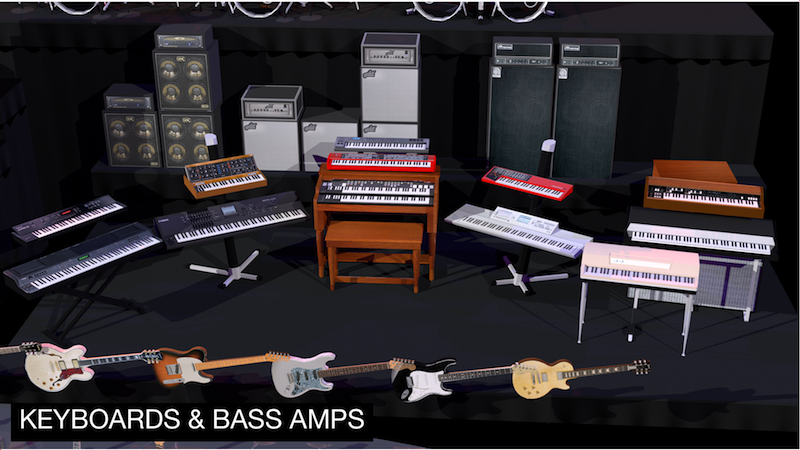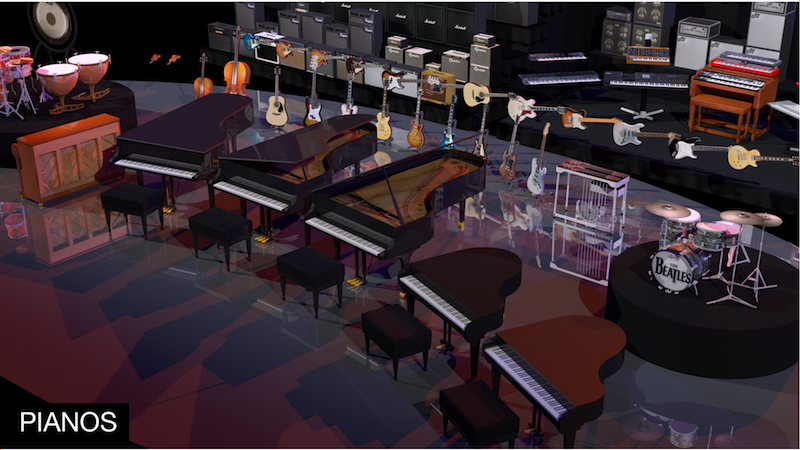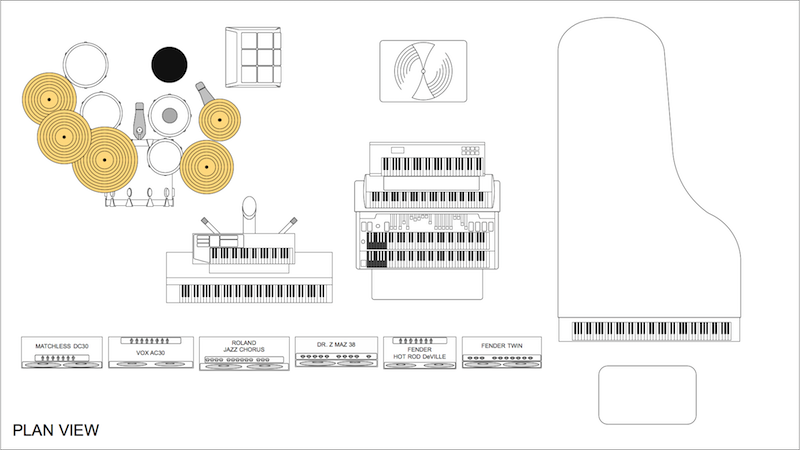-
Posts
673 -
Joined
-
Last visited
Content Type
Profiles
Forums
Events
Articles
Marionette
Store
Everything posted by scottmoore
-
I typically do not use the hoist tool, but is there a way to display dimensions without the arrows? Those take up way too much real estate in a complicated or crowded drawing. A simple xxx , yyy coordinate would certainly suffice.
-
Hoping to get the updated website launched on Wednesday/Thursday.
-
That is really lovely Peter! I think I am going to have to start using the cloud service for renders.
-
While this ship has sailed as far as VW provided Spotlight fixtures is concerned, whenever my team make lighting device symbols, we always make a floor, hang and yoked out version to avoid those kinds of issues. The yoked out version is especially helpful as it displays the fixture correctly in 2D as well. Also very helpful when building ladders for design layer viewports as you can populate them with yoked out fixtures while the ladder is lying flat and have it look correct.
-
Great tip Peter!! Quick tip for drawing connecting lines as I end up doing this kind of thing all the time. I used to draw horizontal and vertical lines that overlapped and used the Trim Tool to slice the lines to the specific length. The problem is, you end up with all kinds of bits to delete assuming your intersecting lines are intersecting more than just themselves. Now I use the Fillet tool and set the Fillet radius pretty small so as to be unnoticeable. Now when you connect two lines this way, there are no additional lines to delete. You can also connect lines that don’t even come close to intersecting. It makes these kinds of drawings go very quickly.
-
My guess is it will still be a couple of weeks.
-
Here are some images of the symbols in my library. All drawn in VW, all drawn on the "none" class which means no added class structure in your drawings, and all drawn to render quickly. All are 2D/3D hybrids. I am finishing up a new website to make these available. You can add your own bass drum head logo, or change the color of drum kits or grand pianos easily.
- 23 replies
-
- 18
-

-

-
I am working on making my library available. I’ll post some sample images soon.
-
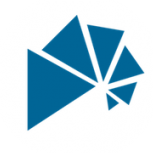
Working with text boxes causes spinning beach ball delays
scottmoore replied to mjunderdog1's topic in Entertainment
I am always a late adopter in whatever the new VW release may be; possibly to a fault. I generally wait for 2-3 service pack releases before diving in. To that point I updated to 2019 about a month ago and have found it to be much faster to load, faster on re-draws and generally more stable than 2018. (I am a Mac user as well). The primary annoyance with me is that occasionally executing a simple command can cause app to lag for 20-60 sec. Typically it’s a simple execution such as drawing a straight line or running the dimension tool. It happens on design layers, sheet layers and when annotating viewports. It is VERY annoying. Aside from that, I’ve found 2019 to be a vast improvement over 2018 and very much worth the upgrade. I am a pretty adamant complainer about the yearly upgrade so that is saying something. -
Unfortunately, the best way to accomplish this is a custom gobo and adjusting the field and beam of the specific light. I’ve made an entire library of hard edge and soft edge gobos, including soft edge circles and rectangles specifically for that kind of thing.
-
I understand that OpenGL doesn’t respond to transparent textures in VW, but it has always been my understanding that Vision uses OpenGL and it renders gobos and shutters just fine in real time. Is the difference the way Vision fixtures are made/how gobos and shutters are implemented or is it how OpenGL works in Vision? I had posted a couple of years ago how helpful it would be if VW offered a really simple “console” that would allow you to focus a light, add a color, add a gobo, add shutters and set intensity. Pretty much what Vision has had for years. Even if that was an extra expense for end users it would be quite useful to a lot of designers that just want to set up scenes for rendering.
-
I don’t use BraceWorks yet but I would suggest that this is probably one of those instances where one cannot expect functionality with all aspects of the VW environment for every end user’s necessary output. I am sure you could affix the hoists to the truss on it’s design layer to achieve weight calculations though the calcs will only be accurate when the truss is flat. I am not aware that BraceWorks calculates loads on angles. If you were to do that, I would class those hoists separately as you would never want to see them in the view port. (Chains hanging at all sorts of odd angles) I always add hoists in plan view to account for any rake on the DLVPs. Since I don’t use BraceWorks I do not care about connections.
-
That is pretty cool!
-
I did notice that and it’s certainly a much more useful tool. I do miss the ability to see all of your numbering selections displayed at one time, but that is certainly not a huge deal at all. Just what I am used to I suppose. Much appreciated.
-
Ahhh, it was the highlighting bit I wasn’t following. Certainly not as intuitive in the GUI as 2018 and earlier, but more flexibility. Very much appreciated.
-
Can someone point me in the right direction in how to use the new numbering tool in Spotlight 2109? I am apparently far to dense to figure it out!
-
I often see Open GL previews where the lighting looks better than what you actually get in Renderworks. It frustrates me a bit. Have you checked your ambient light level? It’s under the “view” menu “set light options”. If what you are are looking for is presentation renderings then I would highly recommend not trying to light a semi-transparent object. It can be done, but you will spend forever trying to make it look right by adjusting light levels, texture transparency, light placement, beam spread, etc. The end result, if you can in fact achieve what you want, will be a huge resource hog on your renders. On the other hand, a picture of what you want will appear correct and will render effortlessly. Something to consider.
-
I am on Mac. 2014 MBP, 2018 MBP and a MacPro tower. I did just realize yesterday that I apparently have lost 8mb of RAM due to a failure so more is on the way.
-
I am working on a project where I used all my own symbols to create the presentations. It is a fairly large arena show and I have been flying around it with very little difficulty. I’ve now replaced my symbols with Spotlight lighting fixtures and Braceworks truss as I am sharing this with collaborators. It has immediately become an intolerable sloth. Waiting 60 sec to change views, seeing lighting fixtures completely disappear (even “refresh instruments” won’t bring them back), and beach balls for days. I spent about 25 - 30 min just rotating six viewports. It’s amazing how much better VW works when it doesn’t have to plow through countless unseen processes
-
Sorry I was not more help. I’ve not used the Spotlight hoist tool.
-
Check out this thread. I use Coroplast all the time.
-
Is there a specific class the hoists use for text and, if so, is the class set to black fill and you either have class fill color selected in the attributes palette or if you edit the class, is it set to automatically use pen and fill at creation? That is a run-on sentence if ever there was one. The same might apply to whatever class you are using to place your hoists. If the attributes are set to “use at creation” in the class edit dialogue, it will use those attributes regardless of what you have selected in the attributes palette.
-
@gmulder are you drawing for your specific inventory or are you designing for any eventuality using multiple vendors? In either case I would suggest creating your own symbol library as, while it will take a little time up front, it will save you a ton of time on every subsequent project. If you are typically drawing for your own inventory, then I would seriously recommend this approach; especially if you have more than one person doing the drawing. No need for additional workflow, just grab the truss symbol you need and go. It will have the finish you want and the 2D version will already have the standardized length color code you want. I am of the opinion that the fewest steps steps to create the desired result is the best way to go. Select the proper truss symbol, insert it into the drawing, raise it to trim, assign it to a class and done. Having to go back to the OIP at that point is begging for mistakes and wasted time. Of course, having some OIP functionality is great so I am not arguing that at all. It just seems like, for what you want to do, creating the symbols as a library would better serve you for years to come.
-
I wouldn’t disagree, but my guess is that functionality won’t be available for some time, if ever.
-
It’s probably best to have both silver and black truss symbols available in one’s library. That is the way we have done our in house symbols. That allows you to place the correct truss for your usage. As to the original post, I totally get what you are doing and might be best handled by updating your symbol library so it works as you want regardless of who might be using the application. Two things to consider: - Make sure to utilize the truss labels as this will emphasize type length and, if you do choose, the truss finish. - consider making the simplified version your specific color. That way you can produce a drawing that simply details truss and all your in house color schemes but still produce lighting plots without a myriad of colored trusses.



